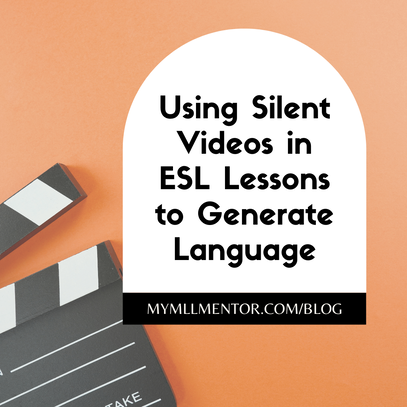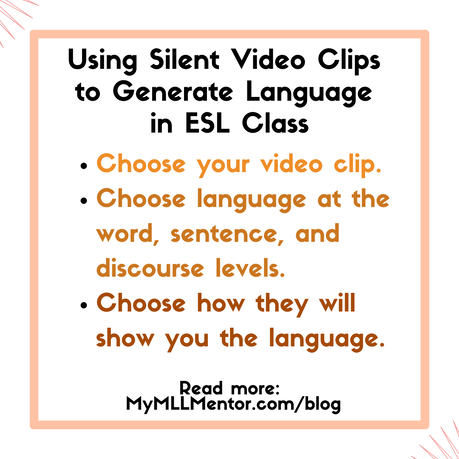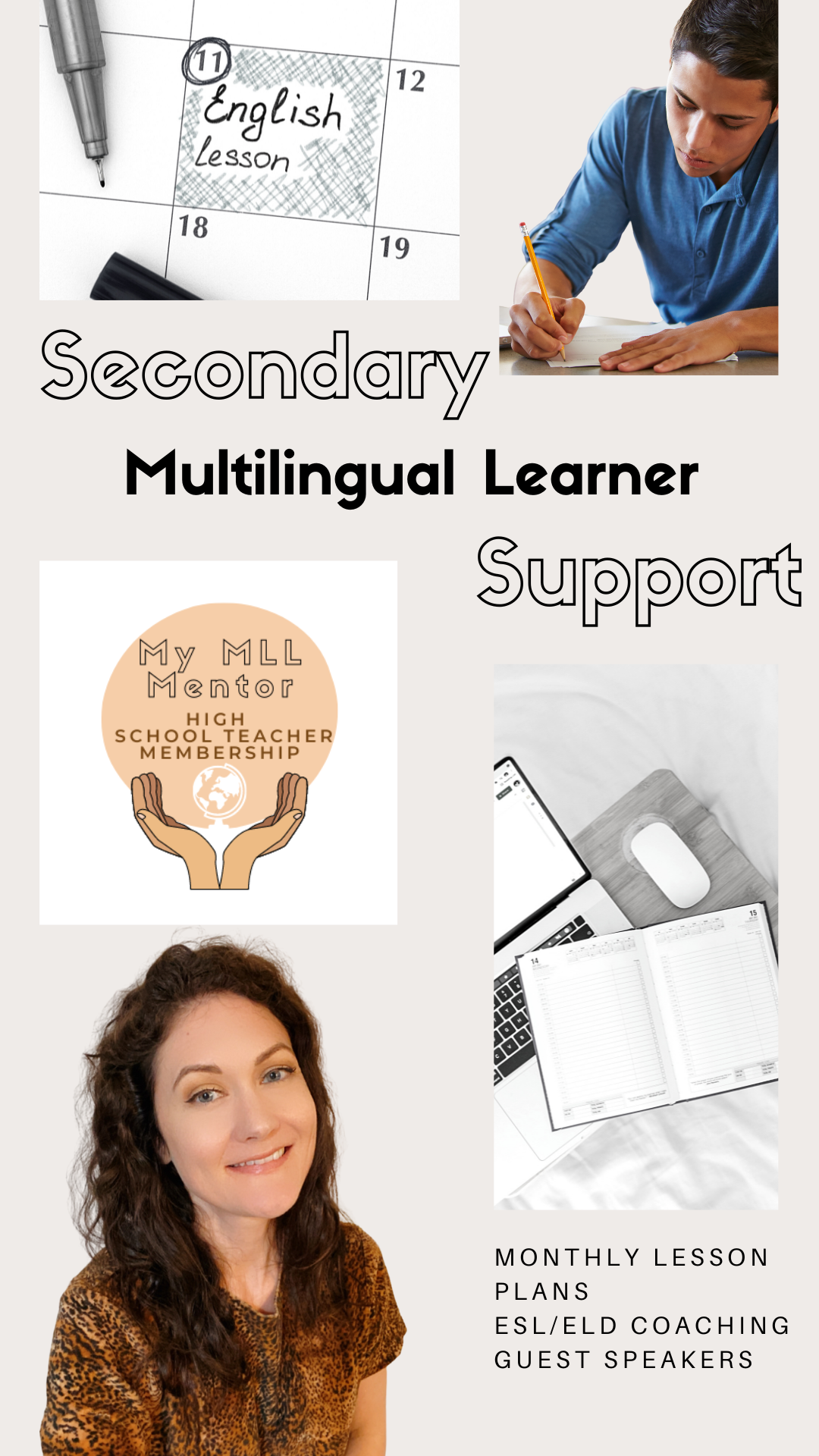|
Using images, videos, charts, and graphs are mainstays in our scaffolding toolkits for our Multilingual Learners, aka English Learners. Making content comprehensible through visuals are especially helpful for our Newcomer students. Why? It lowers the language load and allows our ESL students to focus on the content. After the language load is lowered, we can then add in English language scaffolds for them to practice along with our content. Learning language with content integrated makes language learning more meaningful! Another fun way to lower the language load is by using silent videos. And these may be actual silent movies from the 20s or they may just be YouTube videos on mute! During the first couple years of teaching ESL, my super knowledgeable and helpful colleague had a lesson using Charlie Chaplin's silent movie, Gold Rush. This was a great lesson to use when we had all of our students combined in one room while others did state testing. Students of all proficiency levels could do it. So how can you do this in your classroom? Here are the steps to start tomorrow! Choose a video or movie clip.
Any clip will work! It's best when you can choose a clip that is related to something you are already discussing with students to make it more meaningful. For example, maybe you are reading The Seventh Man by Haruki Murakami. In this story, there is a part where two boys are standing by a wave. I won't spoil it for you, but the wave is an important part of this story. You could choose a video like this of a wave and put it on silent. You can post some guiding questions for students, or you could play it and see what they write down. The purpose is for them to activate prior knowledge of waves and to then generate language around that. When we did the Charlie Chaplin movie, we actually ended up showing most of the movie. We prompted students to identify elements of the story. What was the climax? What was the resolution? Who are the characters and what is the setting? They could tell all of this information just by watching the silent movie and with some sentence frames and word banks! So fun! Decide what language you want students to generate. This is our ultimate goal, and students need guidance for what you want them to use. Think of generating language in the three language levels to guide your planning. What do you want students to use at the word, sentence, and discourse levels? If it is a wave clip, you might want to see this language:
For more, check out the full lesson for secondary Newcomer students! Decide how you will have students generate the language. Once students have an idea of what you want them to use, they can then string together their own sentences. How will they do this? Will you have some sentence stems or frames for them to use? Will you provide a graphic organizer for them to use while they watch the video clip? For the wave video clip, a cause and effect organizer would work! (The big blue wave got bigger, so it crashed on the sand.) To add on to the how, have students pair and share their writing so they are now speaking. Just in this quick activity, you have then hit all of the language domains! Differentiate instruction. Even if you have Newcomers, they may all be at different levels. Differentiating instruction can be easy for writing and speaking. For more advanced students, ask them to write more details and complex sentences. They should also be able to generate more vocabulary if they are more advanced and may not need as much translation support. For those who are at more starting or emerging levels, allowing the use of their first language and allowing drawing and art to express their ideas are key. How else do you use video clips in your lessons? Leave a comment for us below!
0 Comments
Leave a Reply. |
AuthorI support middle and high school teachers through monthly lesson plans, coaching, and guest speaker offerings in our Secondary ESL Teacher Membership. Archives
April 2023
Categories
All
|



 RSS Feed
RSS Feed
